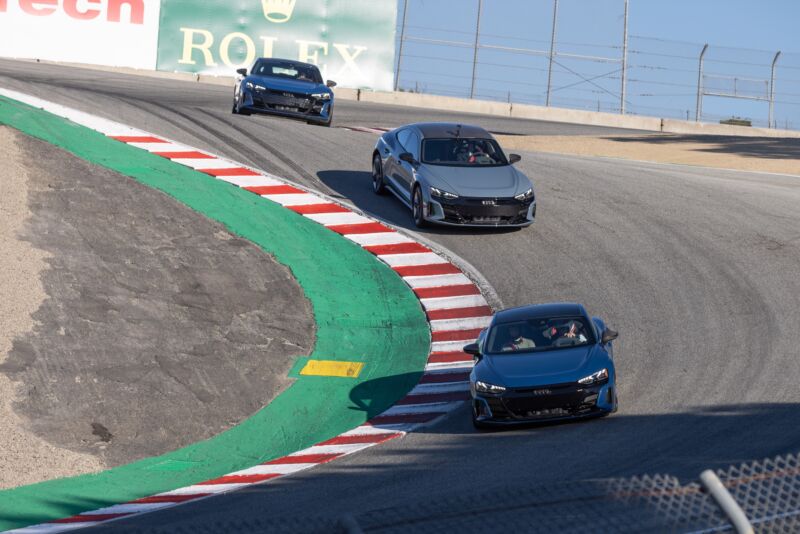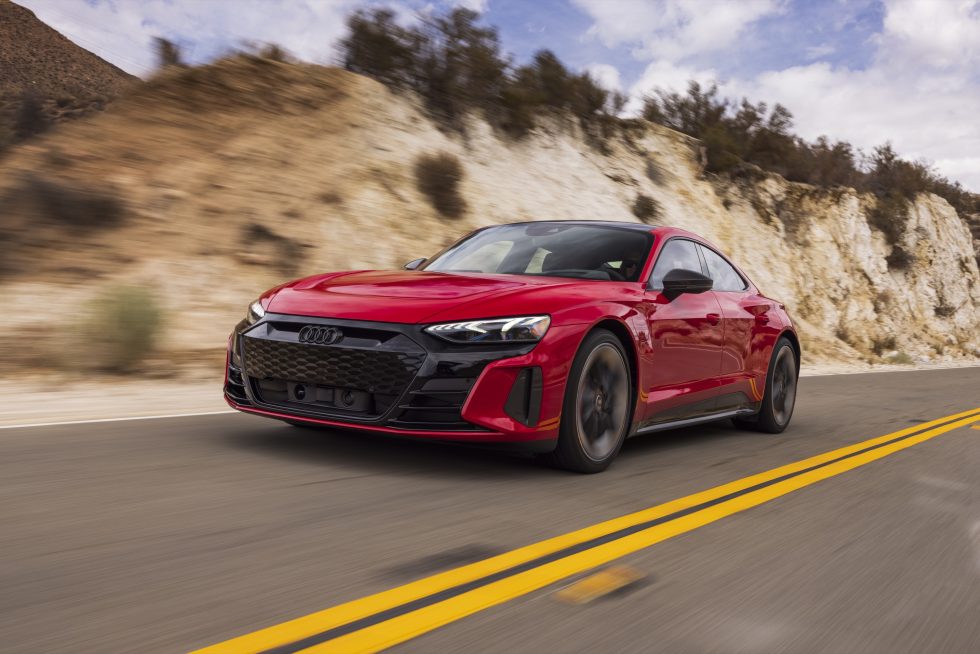When is a Porsche not a Porsche? When it’s a 2022 Audi RS e-tron GT

Enlarge / Danish racing driver Tom Kristensen leads another pair of Audi RS e-tron GTs through the corkscrew corner at Laguna Seca. (credit: Audi)
Call it platform sharing, call it badge engineering, call it what you like-car companies have collaborated with each other to make cars for much of the automobile's history. Sometimes these link-ups happen between companies that might normally be considered rivals: Honda and Rover in the 1980s; the BMW/Toyota project that gave us the new Supra; or perhaps the forthcoming electric vehicle platform-sharing between Ford and Volkswagen or General Motors and Honda.
More often, it occurs among the shared brands of a single OEM-Chrysler Group's K platform in the 1980s is a good example. But few automakers have exploited the advantages of that quite like Volkswagen Group, which builds hundreds of different vehicles across its 10 brands around the world using just a handful of different platforms. The vast majority of these-and we're talking several million cars a year-are built on VW Group's MQB platform, which can give rise to anything from an Audi A3 to a Volkswagen Transporter van, with cars and crossovers and SUVs of most sizes and shapes.

The RS e-tron GT is a little draggier than the Taycan, with a Cd of 0.24. (credit: Audi)
But even as you go up the price scale, this practice is still widely used. For example, for decades Bentleys were basically Rolls-Royces with a slightly different nose; today, they share platforms with Porsche's Panamera and Cayenne. And it's why the handsome four-door EV in this review wears Audi RS e-tron GT badging yet features very Porsche Taycan-like specifications-a consequence of sharing the same J1 platform.